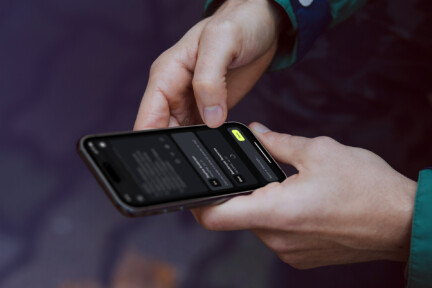

AI Agentic Workflows
AI Agentic Workflows: An Ultimate Guide
AI agentic workflows refer to the structured processes in which autonomous AI agents operate and make decisions independently to achieve specific goals within a defined environment. Unlike traditional AI systems that rely heavily on pre-defined rules or constant human intervention, AI agents in these workflows can perceive their environment, make decisions, learn from feedback, and act autonomously. These AI models can be integrated into intelligent agents that operate autonomously.
An AI workflow can automate tasks that are repetitive, error-prone, or data-intensive, functioning as an intelligent agent capable of perceiving its environment and acting autonomously. This type of workflow is common in systems where agentic AI needs to interact dynamically with its surroundings—such as in robotics, game AI, smart manufacturing, and autonomous driving.
In essence, an AI agentic workflows involve an AI entity or “agent” that follows a series of steps to complete tasks, adapt to new information, and optimize its actions based on the environment and goals it is designed to accomplish. The workflows are often iterative, as agents are continuously learning and improving over time.
Key Components of AI Agentic Workflows

- Perception: AI agents gather information about their environment through sensors, cameras, or other input devices from various data sources. In AI agentic workflows, this phase is crucial for understanding the current state of the environment and identifying the problem or task to address. For example, an autonomous car might use cameras and sensors to perceive nearby objects, road signs, and lane markers.
- Decision-Making: After collecting and processing data from the environment, the AI agent makes decisions based on pre-programmed goals, learned policies, or real-time calculations. This decision-making process may involve algorithms such as reinforcement learning, which allows the agent to learn optimal actions by interacting with the environment and receiving feedback. In more complex AI agent workflows, decisions are made using deep learning models or neural networks.
- Action: Once a decision is made, the agent takes action within the environment, often breaking down a complex task into manageable subtasks. This action could involve moving a physical object, responding to a query, or adjusting a system’s parameters. The agent continuously monitors the effect of its actions and modifies future behavior based on the results. For instance, a robot might adjust its grip on an object based on feedback from sensors.
- Feedback and Learning: The most important aspect of agentic AI workflows is that AI agents learn from their actions. By receiving feedback on the effectiveness of their decisions, agents adjust their strategies to improve over time. This feedback loop can be implemented using methods like reinforcement learning or supervised learning, enabling agents to become more efficient and adaptive.
- Collaboration with Other Agents or Systems: In many AI agent workflows, multiple agents work together to solve problems or optimize outcomes. This collaboration might involve coordinating tasks in a smart factory, managing resources in a supply chain, or playing as part of a team in video game AI. These agents often communicate and share information, improving their collective performance.
Types of AI Agent Workflows

- Reinforcement Learning Agents: One of the most prominent examples of agentic AI workflows is found in reinforcement learning. RL agents learn by trial and error, receiving rewards or penalties based on their actions. Over time, they learn which actions maximize their rewards. A classic example is AlphaGo, which used reinforcement learning to master the game of Go by playing against itself and learning from each game.
- Multi-Agent Systems: These systems involve multiple agents working within the same environment, either cooperatively or competitively. MAS workflows enable agents to solve complex tasks by breaking them down into smaller, distributed tasks. These workflows require multi agent collaboration, where the agents communicate and negotiate with one another, as in autonomous vehicle fleets or drones performing coordinated tasks.
- Autonomous AI Agents in Robotics: In the field of robotics, agentic AI workflows are essential for enabling robots to act independently in real-world environments. Robotic agents, such as delivery drones or warehouse robots, follow workflows where they perceive obstacles, plan routes, and make decisions about how to achieve their objectives efficiently, all without constant human supervision.
- Conversational AI Agents: Chatbots or virtual assistants, such as Siri or Alexa, also follow agentic workflows. They perceive the user’s request (via voice or text), make decisions based on the intent of the query, take action (like providing information or executing commands), and learn from the interaction to improve future responses. This process allows conversational AI to enhance its ability to understand context and provide more accurate and personalized outputs over time. Additionally, retrieval augmented generation can be used to enhance generative AI workflows, meeting enterprise-class use cases.

Benefits of AI Agentic Workflows for Complex Tasks
- Autonomy: AI agents in these workflows are capable of making decisions and performing tasks without constant human input. This level of autonomy can save time and resources, especially in environments where rapid decision-making is critical, such as in manufacturing or logistics.
- Scalability: AI agent workflows allow for systems that can operate on a large scale by leveraging ai models. For example, in a smart city infrastructure, autonomous agents can manage traffic lights, public transportation, and energy grids simultaneously, optimizing resources and responding to changes in real-time.
- Adaptability: Through feedback and continuous learning, agents become more adept at handling complex and dynamic environments. In a retail warehouse, for example, AI-driven robots can adapt to changes in inventory or layout without the need for constant reprogramming.
- Efficiency: These workflows can lead to more efficient processes. In supply chain management, for instance, AI agents can optimize routing and inventory levels based on real-time data analysis, reducing waste and lowering costs.
Challenges of AI Agentic Workflows
- Complexity of Environments: The more dynamic and unpredictable the environment, the harder it is for an AI agent to learn and adapt effectively. Monitoring systems that collect and analyze network traffic are crucial in such environments to enhance network threat detection. Real-world situations may introduce scenarios that were not accounted for during the training phase, which can lead to poor decision-making or failure of the AI agent.
- Communication in Multi-Agent Systems: In systems where multiple agents collaborate, effective communication and coordination are key. However, developing efficient communication protocols between agents, especially in competitive environments, remains a significant challenge.
- Ethical and Safety Concerns: Identifying and responding to security threats is essential in ensuring the safety and accountability of autonomous AI agents, especially in critical systems like healthcare or transportation. Ensuring that AI agents follow ethical guidelines and can be overridden or corrected when necessary is crucial in designing safe AI agentic workflows.
AI agentic workflows represent a powerful approach to building autonomous, intelligent systems that can perceive their environment, make decisions, and learn from interactions. From reinforcement learning agents to collaborative multi-agent systems, these workflows allow AI to operate independently and continuously improve over time.
While the benefits include increased autonomy, adaptability, and efficiency, the complexity of implementing and managing these workflows poses challenges, especially in dynamic environments. As AI technologies evolve, so will the development of more sophisticated agentic AI workflows capable of addressing real-world problems across industries like robotics, logistics, and intelligent systems.
Ready to discover more terms?






